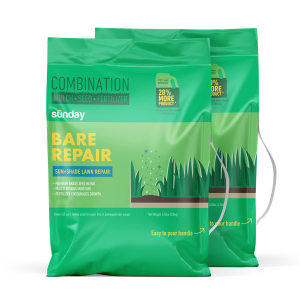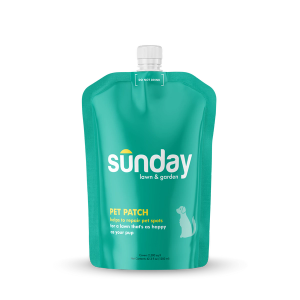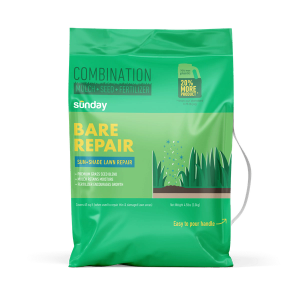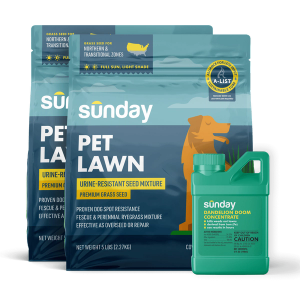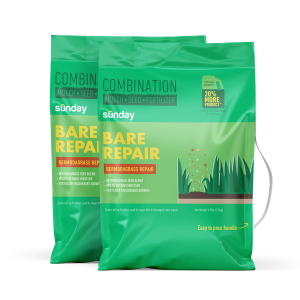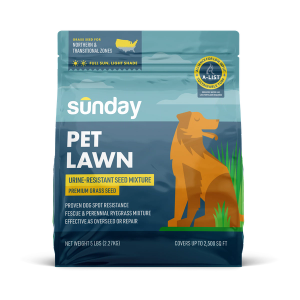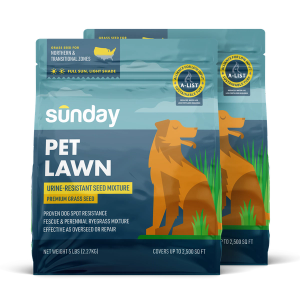When to apply Pet Patch
Pet Patch should be applied to actively growing grass at the beginning of the growing season as a preventive and throughout the season as a spot treatment if needed.
How to apply Pet Patch
Prep the pouch
Shake the pouch. Then remove the cap and attach the sprayer nozzle.
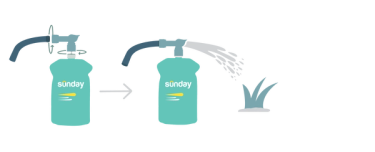
Spray lawn or pet spots
Hook up your hose to the sprayer nozzle. Then turn on the water and open the valve to spray.
For pet spot treatment: Thoroughly apply to pet spots, spraying for 15 seconds at a distance of 12 inches.
For full lawn application: Apply as a preventative treatment to your lawn. Apply evenly across your entire lawn for best results.
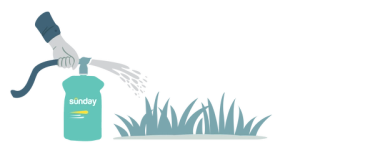
Water it in
Water in Pet Patch Spray after application for best results.
For pet spot application: Once spots are treated, water deeply for 20 seconds per spot.
For preventative application: Water your entire lawn after application.

Fill-in spots with new grass
Pet Patch revives pet spots allowing most grasses to grow back naturally, but more severe damage or slower-growing grasses will benefit from additional patching.
How to fill bare pet spots
After applications dry, remove dead or yellowed grass, and reseed or plant plugs as soon as possible.
- Warm-season grasses: Grasses like bermudagrass tend to grow back quickly on their own. To speed up repair, you can seed or plant warm-season grass plugs.
- Cool-season grasses: For varieties like fescue or bluegrass, we recommend seeding damaged and bare areas after treating as these grass types spread slowly.
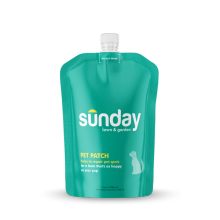
Pet Patch Lawn Treatment for Spots
- Covers 50 spots or 2,500 sq. ft.
- Formulated without pesticides
- See results in just 21 days
- 15 seconds to apply*
*per spot application
Pet Patch application FAQs
How does Pet Patch work? What ingredients do what?
- Surfactant: Helps water (and Sunday nutrients!) penetrate more evenly into the soil and helps the soil hold moisture more effectively. This spurs grass regrowth and distributes urine contaminants to a deeper soil level.
- Humic acid: Improves water retention, nutrient reuptake, and soil structure.
- Seaweed: Supports greening, heat stress, root development, and overall resilience.
- Iron: Enhance deep greening and disease resistance.
- Potassium: Produces energy and improves resilience
How much does Pet Patch cover?
Pet Patch repairs approximately 50 large pet spots if used as a spot treatment.
If used as a preventative lawn spray, it will cover a lawn area up to 2,500 sq. ft.
What are other natural ways to fix pet spots?
- Watering pet spots: If you happen to be in the backyard when your dog is urinating, a great way to prevent pet spots is to immediately water the area. If you have a specific area where your pet goes, set up a sprinkler to water that area more frequently. Water dilutes the urine and will minimize or prevent damage.
- Pet training: Some owners train their dogs to go in one spot in the yard. This can be an area that does not have grass growth or a spot on the lawn that they know will have to be maintained with more care. Take your dog to the desired spot in the yard, designate it with a word such as “spot” or “place,” and then give a reward such as a treat and affection when the dog succeeds.

Let's get growing
Our lawn engine uses satellite data to map out your lawn size and determine things like average rainfall, common weeds, and pest activity.







